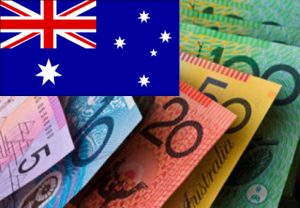Australian Dollar struggles against Sterling
22 July 2016 by News DeskAustralian Dollar investors are now settling and readjusting after a bearish week in preparation for next week’s highly-anticipated Q2 consumer price report.
 Australian Dollar – Inflation is likely to be a strong indication of what action the Reserve Bank of Australia will take in its August meeting, and as a result the Australian Dollar is highly likely to react strongly to the report, according to currency specialists TorFX
Australian Dollar – Inflation is likely to be a strong indication of what action the Reserve Bank of Australia will take in its August meeting, and as a result the Australian Dollar is highly likely to react strongly to the report, according to currency specialists TorFX
New Zealand Dollar (NZD) – GBP/NZD has fluctuated since Wednesday’s session, as the Reserve Bank of New Zealand (RBNZ) economic assessment released on Wednesday night sent the ‘Kiwi’ plummeting.
Bets are now high that the RBNZ will cut the key New Zealand interest rate in its August meeting, which is now just three weeks away.
However, as the ‘Kiwi’ has fallen far from its best levels over the last week, it may experience a bounce back in profit-taking during quieter trade next week. It gained on Sterling slightly on Friday after the UK’s first post-Brexit PMI results disappointed investors.
Australian Dollar struggles against Sterling
The Pound – Movement was mixed on Thursday as investors scurried to readjust their positions on European currencies in response to the European Central Bank’s latest policy meeting.
Sterling initially plummeted on Thursday morning following the publication of June’s UK retail sales report.
The report indicated that retail sales were far worse in June than expected with the monthly score falling from 0.9% to -0.9% and the yearly figure dropping from 5.2% to 3.9%.
Investors initially sold off the Pound in droves as they assumed the poor figures were due to Brexit jitters having a negative effect on consumer buying.
However, the Office for National Statistics report revealed that the figure was actually due to poor weather conditions in June affecting clothing purchases.
The Pound was sturdy during Friday’s session ahead of July’s preliminary PMI scores. However, after their release the Pound slumped from its daily highs as figures printed below expectations across the board. Services plunged from 52.3 to 47.4 while Manufacturing contracted from 52.1 to 49.1.
US Dollar (USD) – The US Dollar remained sturdy during Thursday’s session as sentiment towards the ‘Greenback’ and the US economy remained solid amid recent optimistic data.
Investors had been concerned earlier this month that the US economy could be affected by the shockwaves of Britain’s Brexit decision.
However, throughout the month, data indicating that the US economy has remained resilient and healthy despite the UK’s decision have increased US market confidence. US Fed rate hike bets remain low, but investors now believe there is over a 50% chance that there will be another rate hike before the end of 2016.
July’s Federal Reserve policy meeting is also approaching, being due to take place on the 27th (next Wednesday). Markets currently do not expect there to be an interest rate hike as the EU Referendum was still so recent.
Euro (EUR) – The Euro experienced mixed movement on Thursday, similarly to the Pound. The Pound to Euro exchange rate initially gained as investors readjusted on the shared currency ahead of the European Central Bank’s (ECB) July policy meeting.
The ECB delivered exactly the sort of meeting many economists were expecting. The central bank left all policies frozen, reasserted that the current lending scheme would last until at least March 2017, and reminded markets that the bank had the means and the will to protect the Eurozone economy from damage.
On the subject of Brexit, the ECB was quieter than some analysts expected. ECB President Mario Draghi stated that while the Brexit was indeed a downside risk to the Eurozone economy, the Eurozone had appeared resilient thus far. He suggested that Eurozone growth could be affected from 0.3%-0.5% over the next three years.
Canadian Dollar (CAD) – The Pound to Canadian Dollar exchange rate rallied to its highest levels since June on Friday morning, as sentiment towards the Canadian Dollar remained low amid falling prices of oil, Canada’s most lucrative commodity.
High oil stocks continue to weigh on demand and the price of the commodity. The Canadian Dollar has struggled to be appealing in recent weeks due to the consistently struggling price of oil and looks to continue this trend for a while.
However, analyst suggestions that the Canadian Dollar could become something of a ‘safe-haven’ as other currencies are plagued with political and economist unrest could see the ‘Loonie’ becoming a bit sturdier in the future.
Learn more about the Australian Dollar – Contact TorFX: Get A Quote
Want to live and work Down Under? Click here for expert help: Skilled Migration to Australia
Want to get a job Down Under? Click here for expert help: How to Get a Job in Australia
Click here for expert help with travel visas: Travel Visas to Australia
Click here for expert help with Study Visas: Student Visas in Australia
Click here for tourist information about Australia: Visit Australia


